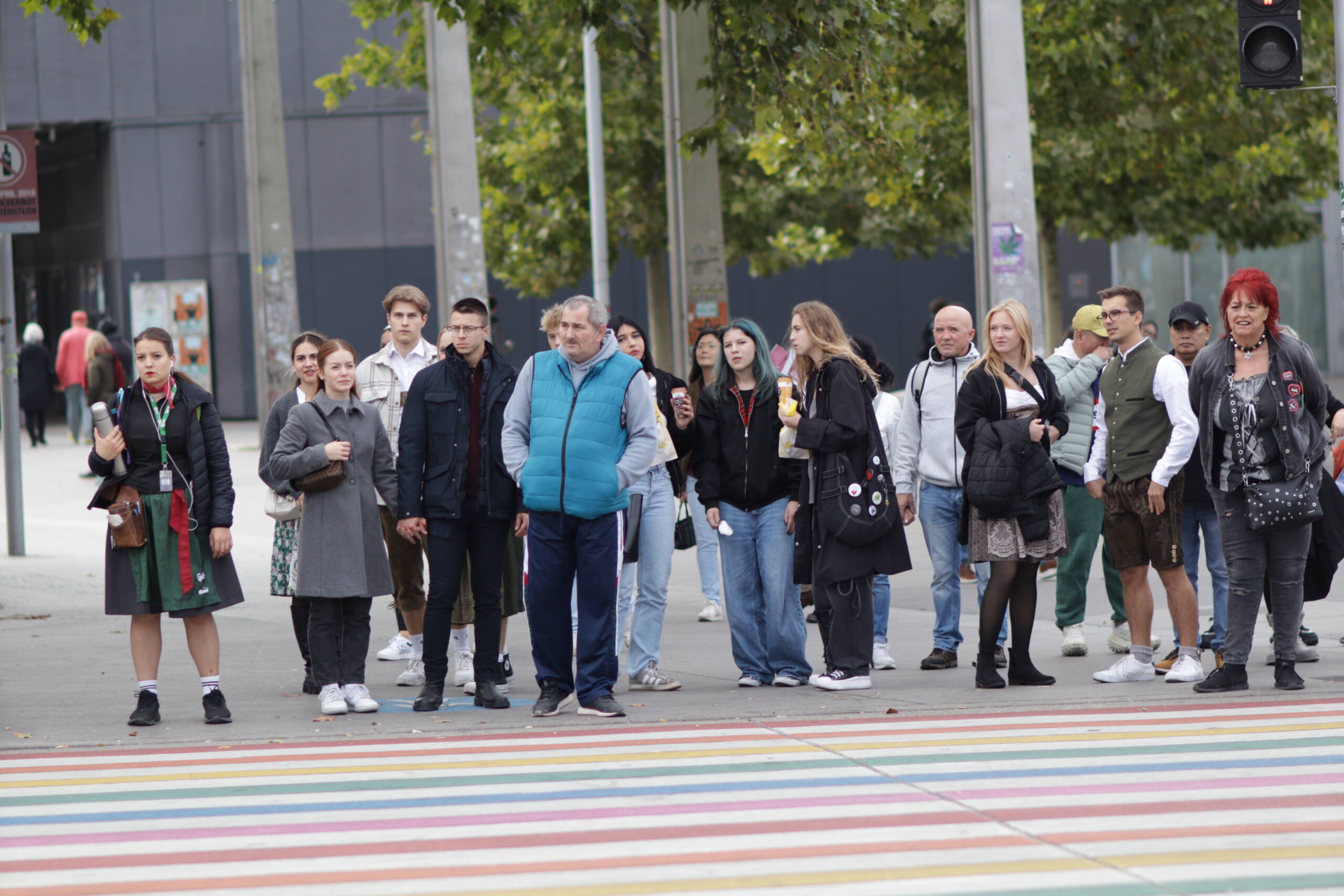There’s something wonderfully telling about this group frozen at the rainbow-striped crosswalk, each person radiating their own small story while collectively pointing toward a bigger one: the lure of the Prater. Vienna’s famed amusement park has always been a magnet for contradictions—it’s both nostalgic and garish, a place where imperial ghosts rub shoulders with neon lights and the smell of grilled sausages. The crowd waiting here could easily be a prelude to that atmosphere, an everyday ensemble cast that looks almost too perfectly mismatched to be accidental.

On the left, a young woman in traditional-style dress with a lanyard around her neck looks half-official, half-costumed, as though she might be on her way to guide a group through some cultural event. Just beside her, a man in a turquoise padded vest has the relaxed stance of someone with nowhere pressing to be—yet his eyes betray the curiosity of a bystander who enjoys watching life unfold. Further along, teenagers with streaks of dyed hair are licking ice creams, already indulging in the sweets-before-dinner vibe that Prater practically encourages. There’s even someone in lederhosen, standing comfortably beside a young woman in chic black tights and a jacket, proof of how easily heritage slips into the everyday in Austria. And then, rounding it out, a striking woman with bright red hair and a punkish outfit—studded bag, torn jeans—who could be heading to a concert as much as to a ferris wheel ride.
The crossing itself, painted in the full rainbow spectrum, sets the tone: playful, celebratory, inclusive. It’s not just a path across asphalt, it’s a stage where Vienna’s eclectic social fabric briefly gathers. Everyone has been equalized by the red light—old and young, traditional and modern, casual and eccentric—all standing shoulder to shoulder, waiting. But once the signal changes, this colorful mix will spill forward toward the Prater, that great democratizer of leisure where a banker and a student can scream side by side on a roller coaster, and where schnitzel, beer, and sugar-dusted pastries blur social lines even further.
What’s insightful here is how everyday scenes in Vienna are layered with cultural cues. You don’t need the opera house or Schönbrunn Palace to sense Austrian identity; it reveals itself in small pauses like this one. The Prater beckons not only as a place of entertainment, but as a metaphor for Vienna itself—anchored in tradition yet unapologetically messy and alive. Watching this crowd, you see how Austria carries its past, experiments with the present, and heads together—sometimes awkwardly, sometimes joyfully—into whatever comes next.
Leave a Reply